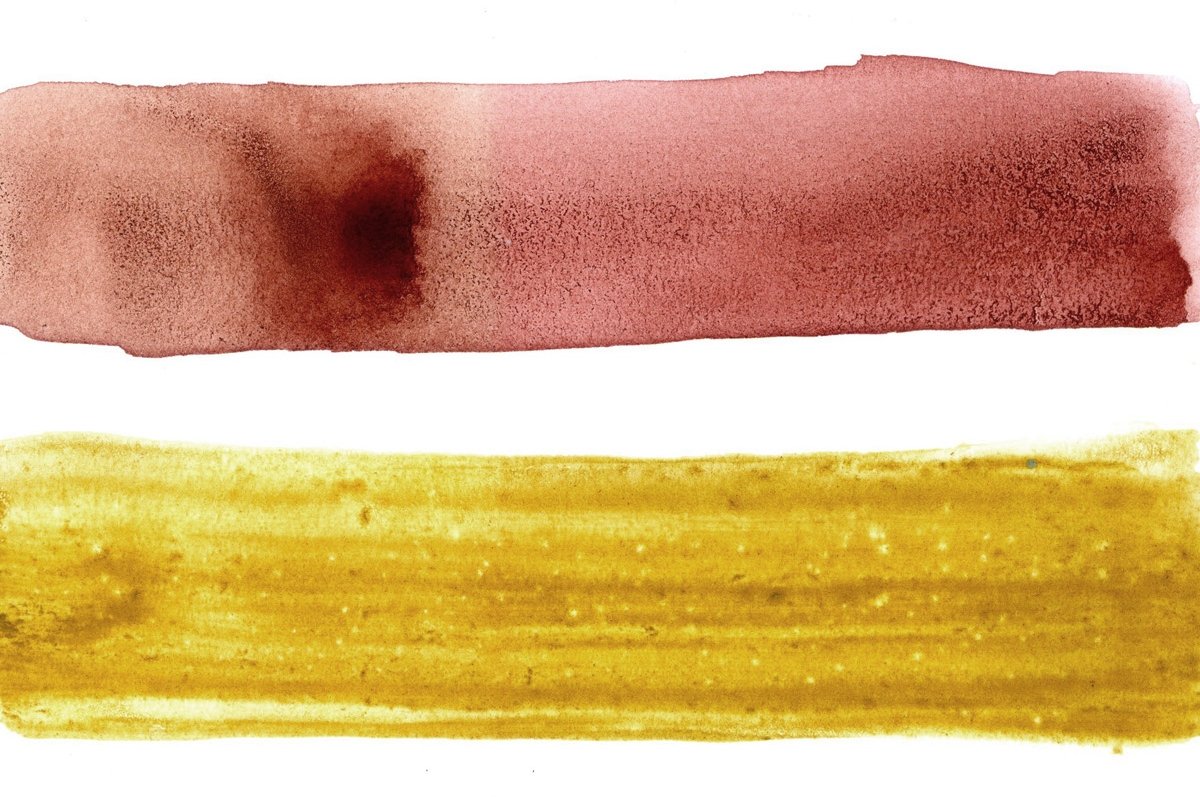alum & lake pigments
Natalie Stopka, April 2018
I’ve looked at how much alum is necessary to marble with watercolor and acrylic paints on paper, but here is also a class of pigments which include alum in their makeup. These can be used for marbling, and historically were an important source of particular hues. These are lake pigments, made from natural dyes and alum. As both a marbler and a natural dyer myself, these pigments are of great interest.
What are lake pigments?
Natural dyes (with the exception of vat dyes including indigo) are water soluble. This means they cannot be used for marbling, as they simply dissolve into the size. In order to make these beautiful botanical colors (many of which have no counterpart among mineral colors) useful for marbling they must be converted into pigments. A lake pigment is made when dissolved dye is precipitated onto an inert mineral substrate: alum. The precipitate is then filtered, washed, and ground. For marbling it can be mulled with a binder, usually watercolor medium, and used like any other watercolor paint.
If you've ever used the all-in-one dyeing method of mixing mordant, dye, and fiber in one pot, you may have noticed some of the dye spontaneously settling to the bottom. This means the dye and alum have bonded together, making an accidental lake pigment.
genuine rose madder lake
What role does alum play in lake pigments?
Alum readily bonds to dye molecules, making it a substrate well suited to the formation of lake pigments. Other mineral mordants can function the same way, such as tin and copper salts. Each of these mordant substrates acts to stabilize the dye compound, improving its lightfastness and making it insoluble. And just as with natural dyes applied to fabric, the choice of mordant and pH can strongly affect the shade of a lake pigment.
The example below is a lightfastness test of homemade lake pigments (yes, I need to practice patience in grinding pigments). On top is madder lake with copper; below it is weld lake, mixed as watercolors. The left side was exposed to direct southerly sunlight for one month, and the results I think are quite promising. Unfortunately lake pigments suffer from a bad reputation because they are not as permanent as their modern synthetic replacements or mineral pigments. Some lake pigments are certainly fugitive, and care should be taken to keep artwork made with them out of direct sunlight. The most lightfast pigments are made from the most lightfast dyes, such as madder, cochineal, and weld.
Lightfastness test of madder lake and weld lake. Left side exposed to sunlight for one month
Marbling with lake pigments
Because lake pigments contain a mordant within them, paper does not need to be pre-mordanted before marbling! I have read this in multiple sources, and the test below confirms it.
A: Unmordanted paper
B: Paper pre-mordanted with 1.5 teaspoons alum/pint water
The mordanted paper absorbs the marbled print a bit more quickly with a slightly sharper quality, but this shows that pre-mordanted paper is not an absolute requirement.
Lake-based watercolors are prepared for marbling just like any other watercolor: each color is thinned to a good consistency and mixed with the appropriate amount of surfactant. You don't need to go through the trouble of grinding your own pigments to enjoy working with lakes, any 'genuine' watercolor lake such as rose madder or carmine will work. It can be difficult to know just what manufacturers put in their paints, and whether they are synthetic pigments simply bearing the names of historical shades, so it's worth seeking high quality paints if you want the real thing.
If you are marbling with a mixture of genuine lakes and pigments from other/unknown sources, pre-mordanting the paper is advisable.
Update: After 1 month of exposure to direct sunlight, no fading has been observed in samples printed on mordanted and unmordanted paper. The alum present within the lake pigments appears to stabilize the dye colorants admirably.
Please feel free to contact me with any insights or sources for historical pigments!
More Information and Sources:


